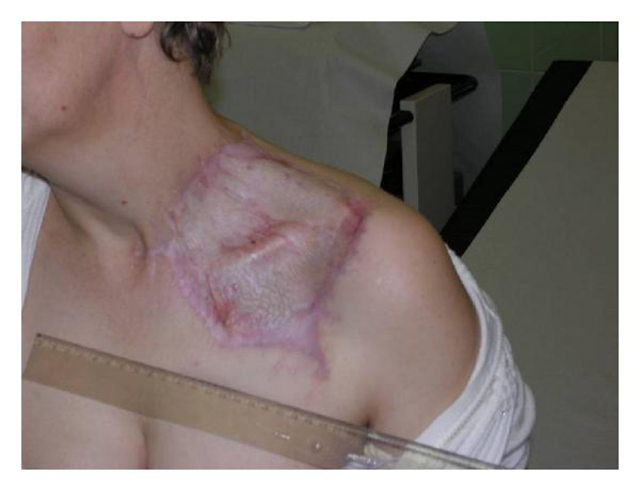What Is Dermatofibrosarcoma Protuberans?
Dermatofibrosarkoma Protuberans or DFSP is a type of skin cancer that rarely occurs and starts from connective tissue cells in the middle layer of the skin ( dermis ). This cancer initially looks like a bruise or wound which then develops into a lump on the surface of the skin. DFSP usually appears on the body, legs and arms.
These skin sarcoma tumors can be experienced by all ages, but most often occur in men aged 20 to 59 years, DFSP growth tends to be slow and rarely spread to other body parts. Therefore, this cancer has a chance of recovering higher after treatment. But if left untreated, this cancer will grow into layers of fat, muscle, or bone so that it will be more difficult to handle. The main treatment performed in the case of DFSP is the surgical procedure, but the risk for postoperative relapse remains high.
Symptoms of Dermatophibrosarcoma Protuberans
The initial symptoms of dermatofibrosarcoma protuberans are sometimes overlooked and appear in the form of:
- Thickening of the skin (plaque) on the skin.
- The skin surface feels rubbery or hard to the touch.
- The surface of the skin is brownish red,
- Lumps that grow like zits on the skin.
- Skin feels rough,
- The lump doesn't hurt.
During its development, a lump appears on the surface of the skin with a sign:
- The growth of the lump makes the skin stretch.
- The skin where the lump can crack and bleed.
- The skin color becomes blue or red in children and in adults reddish brown
- The size of the lump is from 0.5 to 25 cm in diameter.
Are You Know?
What Is Amenorrhea?
What Is Amputation?
What Is Achondroplasia?
Protuberans Dermatofibrosarcoma Cause
Until now, the cause of dermatofibrosarcoma protuberans has not been confirmed. DFSP often occurs after severe skin injury, scarring due to burning or surgery, and appears in patients who often undergo radiotherapy. In tumor cells, including in the case of DFSP, an abnormal chromosome is found which results in the incorporation of genes which encourages the growth of tumor cells.
Diagnosis of Protuberans Dermatofibrosarcoma
The diagnosis of dermatofibrosarkoma protuberans begins with a physical examination, especially to see the condition of the lump area. To be sure, the doctor can do a series of examinations, including:
- MRI examination. This examination is done using a special device with magnetic waves, to see a picture of the extent of cancer in order to determine treatment measures.
- Skin biopsy . It is done by taking samples of skin tissue and will be examined in the laboratory, to determine the presence of cancer cells.
- Chromosome examination. This examination is to detect abnormal genes in cancer cells.
Dermatofibrosarcoma Protuberans Treatment
The main treatment for dermatofibrosarcoma protuberans is an surgical procedure to remove cancer cells. The surgical procedure that can be done is:
- Excision Surgery . This procedure is performed to remove cancer in the skin and healthy skin tissue around it. This procedure is done to make sure all cancer cells are lifted.
- Mohs Surgery. This surgical technique is done by removing cancer cells and a little healthy tissue around it. With Mohs surgery, doctors remove less tissue than excision surgery techniques. The doctor then examines the edge of the tissue cut with a microscope to make sure there are no more cancer cells left.
- Radiation therapy or radiotherapy. Therapy uses special rays to kill cancer cells and is done when a layer containing cancer cells cannot be removed all through a surgical procedure.
- Target therapy. Giving this drug can also prevent serious damage to healthy cells (non-cancerous). However, this drug can only work effectively in patients who have certain DNA. Therefore DNA testing is needed before giving the drug to make sure the patient has the DNA. During the administration of this drug, the patient's condition also needs to be observed carefully.
Post-treatment, patients need to be examined every 6 months for 5 years. A small percentage of DFSP cases can reappear within 3 years after the surgical removal of cancer. Therefore, periodic post-treatment examinations are highly recommended.


0 Response to "What Is Dermatofibrosarcoma Protuberans?"
Post a Comment